|

|
Coteaching Reading Comprehension Strategies in Elementary School Libraries: Maximizing Your Impact
Chapter 9: Synthesizing:
Emerging Lesson
|
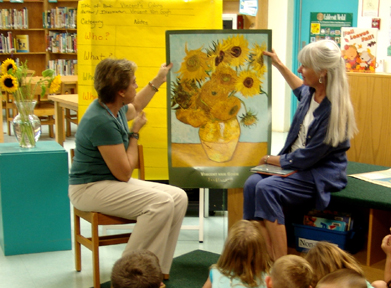 |
This lesson was field tested by kindergarten teacher Cass Peregrina,
art instructor Tracy Lynn Ross, and Judi Moreillon, serving
in the role of teacher-librarian. This photograph shows Cass
and Judi conducting a think-aloud as they discuss their individual
responses to van Gogh's painting of "Sunflowers."
Students were invited to make their own responses after educator
modeling.
The educators conducted this unit of study in the library,
the classroom, and the art room. They team taught most of the
components of the lesson. The teacher-librarian was not present
when the students composed their class letter to Vincent van
Gogh. That piece had been planned for a day when the educators
determined that students' attention spans were not sufficient
to sustain a long instructional period.
Flexibility is key!
|
| Vincent
van Gogh's "Sunflowers" Painting |
From the Vincent van Gogh Gallery
|
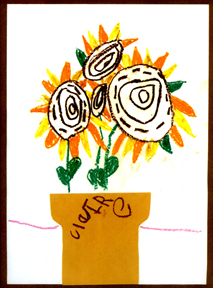 Claire
Claire |
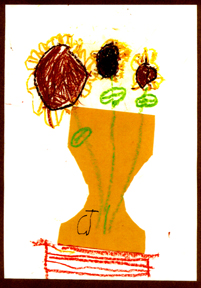 CJ
CJ |
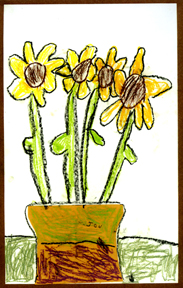 Jona
Jona |
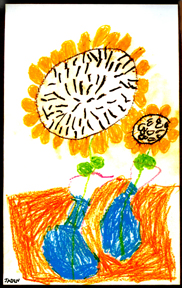 Jaden
Jaden |
|
Students' Sunflower Paintings Created in
the Art Room
|
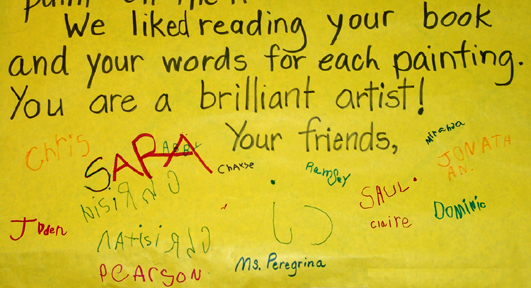
This is an excerpt from students' shared writing letter
to Vincent van Gogh.
|
Adaptation 1
Due to the fact that these kindergarten students
were new to formal schooling, the educators determined they
were not ready to write three facts and record three responses.
Instead, we asked them to dictate one fact and offer one response.
It is important that educators adapt lessons and units of instruction
to meet the needs of the students in their charge.
|
Adaptation 2
When responding to their paintings, students spontaneously
imitated the print in Vincent's Colors. This book has
excerpts of van Gogh's letters to his brother Theo in which
he writes about the colors in his paintings. This was an ideal
way for students to demonstrate the connections they were making
between texts (synthesis), and it assessed their ability to
determine the main ideas in their paintings. Hurray for the
children!
|
AASL
Standards for the 21st-Century Learner:
-
Read, view, and listen for information presented
in any format (e.g., textual, visual, media, digital) in order
to make inferences and gather meaning. (1.1.6)
-
Continue an inquiry-based
research process by applying critical-thinking skills (analysis,
synthesis, evaluation, organization) to information and knowledge
in order to construct new understandings, draw conclusions,
and create new knowledge.
(2.1.1)
-
Organize knowledge so it is useful. (2.1.2)
-
Use creative and artistic formats to express personal learning. (4.1.8)

About | Web
Support | How-to Chapters | Pathfinders
| Workshops
Launched: March 2007
Updated: 5 June 2013
|